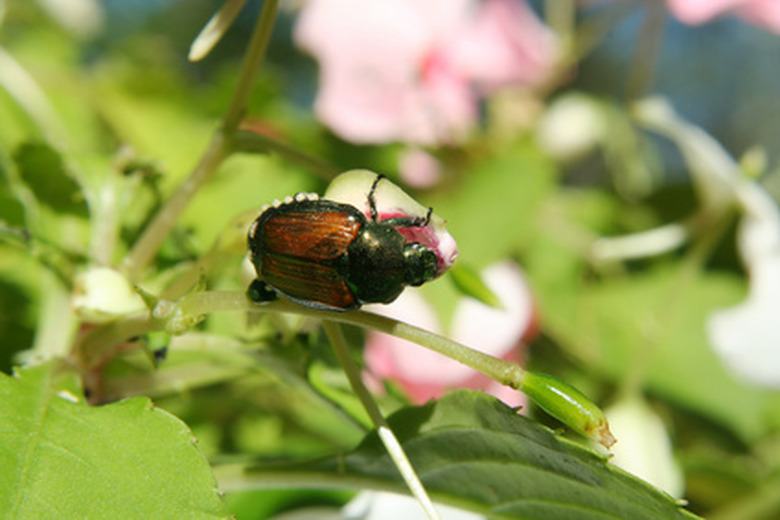How To Get Rid Of Japanese Beetles On A Birch Tree
The invasive Japanese beetle damages a range of plants, including the birch tree, where it likes to feed on the upper leaves exposed to full sun. Adult Japanese beetles, just under 1/2 inch long with a metallic green body and coppery brown wing covers, leave behind their signature skeletonized leaves where they have fed. Since these pests spends ten months of the year in the turf, it is most effective to treat Japanese beetles grubs in the ground. Reserve pesticide use for when damage from beetles has been documented over two or more years and when beetle numbers become excessive. To best get rid of Japanese beetles on a birch tree, start underground.
Step 1
Cut four evenly spaced samples in the turf in early spring from where you suspect adult beetles have emerged. Use a hand trowel to cut a 6-by-6-inch square on three sides. Pull back the turf and examine the top 2 inches of soil. Count the number of eggs present in each 6-inch square area. If you find two to three per square, plus obvious damage to the turf, proceed with chemical treatment.
- The invasive Japanese beetle damages a range of plants, including the birch tree, where it likes to feed on the upper leaves exposed to full sun.
- Cut four evenly spaced samples in the turf in early spring from where you suspect adult beetles have emerged.
Step 2
Apply imidacloprid, a long-lasting reduced-risk insecticide, in mid to late June, before eggs hatch into grubs.
Step 3
Follow up with a treatment of trichlorfon in July if the area is highly infested. Forty-eight hours before applying the chemical, water the area with 1/2 inch of water to bring feeding grubs closer to the soil surface.
Step 4
Water the area with a 1/2 inch of water immediately after the chemical application to encourage the chemical to flow down to the root zone.
Step 5
Continue to water the treated area every four to five days so the trichlorfon can work properly.
Tip
Take proactive steps to keep Japanese beetles from invading your yard. The University of Utah Extension recommends encouraging natural enemies of the Japanese beetle by planting a variety of plants that produce pollen and nectar, and selecting plants that adult beetles avoid, such as dogwood, American holly, lilac, magnolia, and forsythia. Apply pesticide in the afternoon, when beetles are most active.
Warning
Japanese beetle traps may do more harm than good, according to the University of Illinois, because the traps attract more beetles to the area than they capture.
Things Needed
- Trowel
- Imidacloprid
- Water hose
- Trichlorfon
